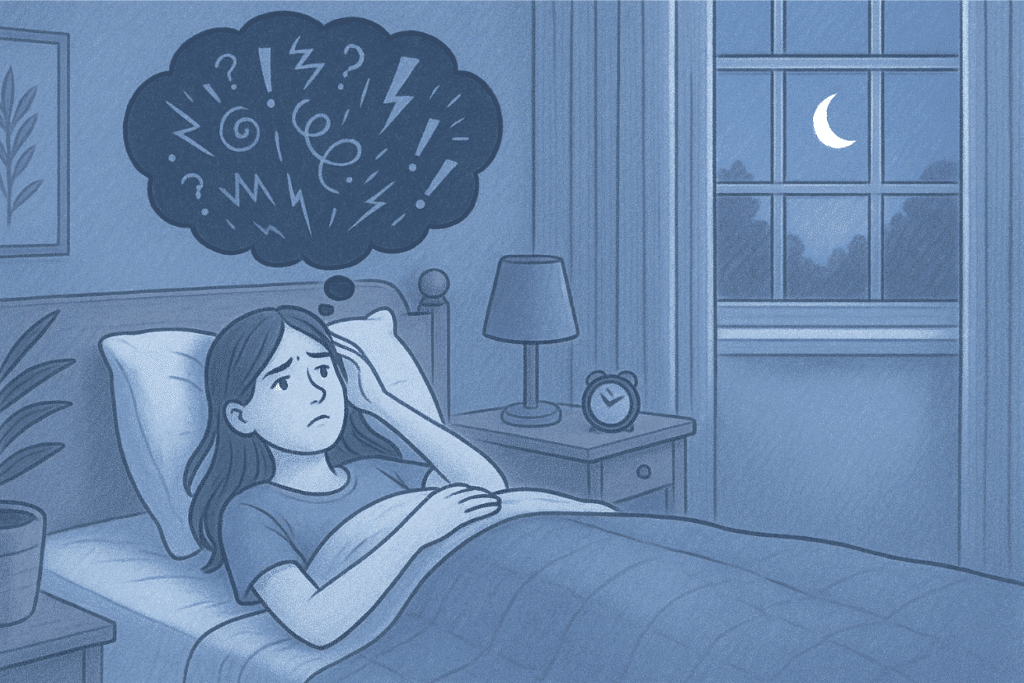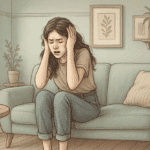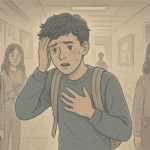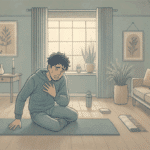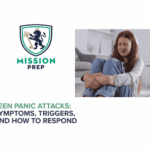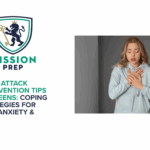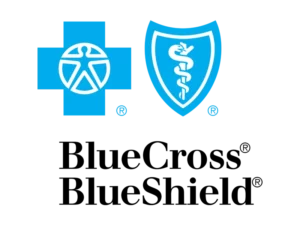Key Takeaways
- Sleep deprivation can trigger panic attacks by disrupting brain chemistry and increasing stress hormones.
- Missing just one night of quality sleep can make teenagers more vulnerable to anxiety and panic symptoms.
- Simple techniques like 4-7-8 breathing and progressive muscle relaxation can provide immediate relief during sleep-related panic episodes.
- Establishing consistent sleep routines and creating a sleep-friendly environment are essential prevention strategies for teens struggling with panic attacks.
- At Mission Prep, we specialize in comprehensive treatment for adolescents struggling with sleep-related panic disorders. We offer integrated approaches that address both sleep hygiene and anxiety management through evidence-based therapies.
Sleep Deprivation Triggers Panic
When teenagers don’t get enough sleep, their brain and body undergo significant changes that can directly trigger panic symptoms. Teens need 8–10 hours of quality sleep per night, but many are getting far less at around 6.5–7.5 hours.
Even one night of poor sleep can make adolescents more susceptible to anxiety and panic the following day. Sleep loss creates a state of physiological stress, and the nervous system responds by becoming hypervigilant—exactly the condition that primes the body for a panic attack.
| Mission Prep Healthcare: Adolescent Mental Health Care Mission Prep Healthcare specializes in mental health treatment for teens aged 12-17, offering residential and outpatient programs for anxiety, depression, trauma, and mood disorders. Our therapies include CBT, DBT, EMDR, and TMS, tailored to each adolescent’s needs. With a structured, supportive environment, we integrate academic support and family involvement to promote lasting recovery. Our goal is to help teens build resilience and regain confidence in their future. Start your recovery journey with Mission Prep Healthcare today! |
The Sleep-Anxiety Connection
Brain Chemistry Changes
Sleep deprivation disrupts the delicate balance of neurotransmitters in your brain, particularly affecting those that regulate mood and stress. When you miss out on sleep, levels of serotonin (which helps maintain calm) can drop, while excitatory neurotransmitters increase.
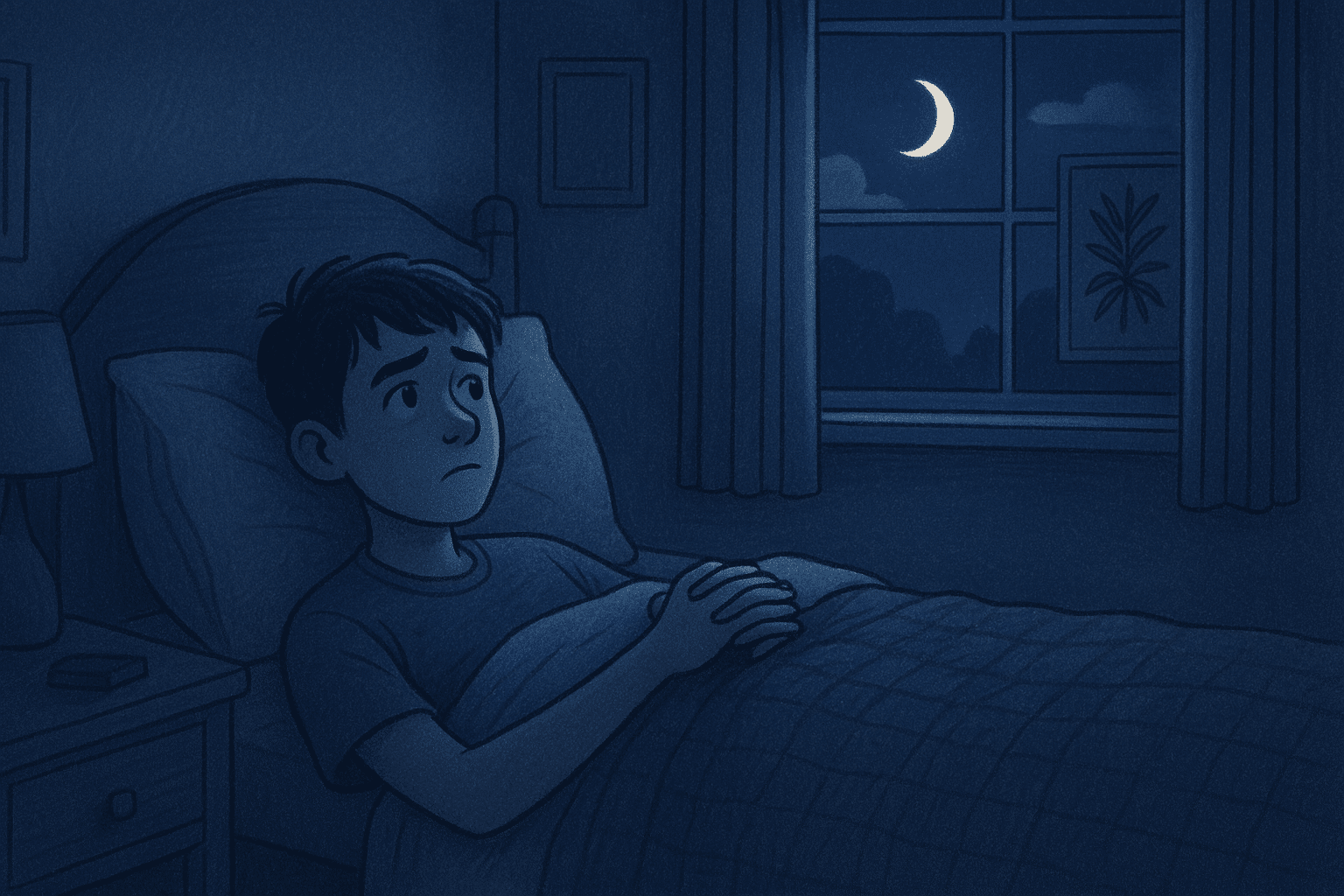
The teenage brain is especially vulnerable to these chemical imbalances and can easily cause panic.
During adolescence, the brain undergoes significant development, particularly in areas responsible for emotional regulation and impulse control, such as the prefrontal cortex, amygdala, anterior cingulate cortex, and orbitofrontal cortex.
Without adequate sleep, these developmental processes are disrupted, potentially contributing to both immediate panic symptoms and longer-term anxiety disorders.
Stress Hormone Spikes
Even a single night of inadequate sleep can cause a substantial increase in cortisol levels the following day. Cortisol, often called the “stress hormone,” prepares the body for fight-or-flight responses, which is exactly the physiological state that characterizes a panic attack.
This hormonal disruption doesn’t just affect daytime functioning. High evening cortisol levels make it harder to fall asleep the next night, creating a self-perpetuating cycle. For teenagers already going through the hormonal changes of adolescence, this additional imbalance can be particularly destabilizing.
Emotional Regulation Failure
Sleep is crucial for emotional processing and regulation, especially for teenagers whose emotional control systems are still developing. When you’re sleep-deprived, your ability to manage emotional responses becomes severely compromised.
Sleep-deprived teens often experience emotional “flooding,” where feelings of anxiety can rapidly escalate to panic. This happens because sleep loss impairs the brain’s ability to properly categorize threats and non-threats, making even minor stressors feel catastrophic.
Symptoms That Overlap
Physical Warning Signs
Both sleep deprivation and panic attacks can cause physical symptoms that feel frightening and overwhelming. These may include heart palpitations, shortness of breath, dizziness, trembling, and sweating. When these symptoms stem from lack of sleep, they’re often less intense but more persistent throughout the day.
In contrast, panic-specific symptoms tend to spike suddenly and may include a more pronounced sense of choking or chest pain. Gastrointestinal distress is another common overlap—both conditions can cause stomach upset, nausea, or loss of appetite.
Learning to recognize these symptoms as normal physiological responses rather than signs of danger is an important step in breaking the cycle.
Mental Symptoms
The cognitive effects of sleep deprivation can closely resemble the thought patterns seen during panic attacks. Both conditions can cause racing thoughts, difficulty concentrating, and heightened irritability.
Sleep-deprived teens often experience “mental fogginess” or have trouble making decisions; states that can increase vulnerability to catastrophic thinking. Many teenagers are surprised to learn that their feelings of unreality or detachment often described as “feeling weird” or “not like myself” can be direct consequences of poor sleep rather than signs of serious mental illness.
Panic vs. Exhaustion
Learning to differentiate between panic attacks and extreme fatigue is essential for breaking the sleep-anxiety cycle.
While both may involve feelings of weakness, disorientation, and even shortness of breath, there are key differences. Panic attacks typically have a sudden onset and include an overwhelming sense of fear or doom, while exhaustion symptoms develop more gradually and may temporarily improve with rest or stimulation.
The Vicious Cycle
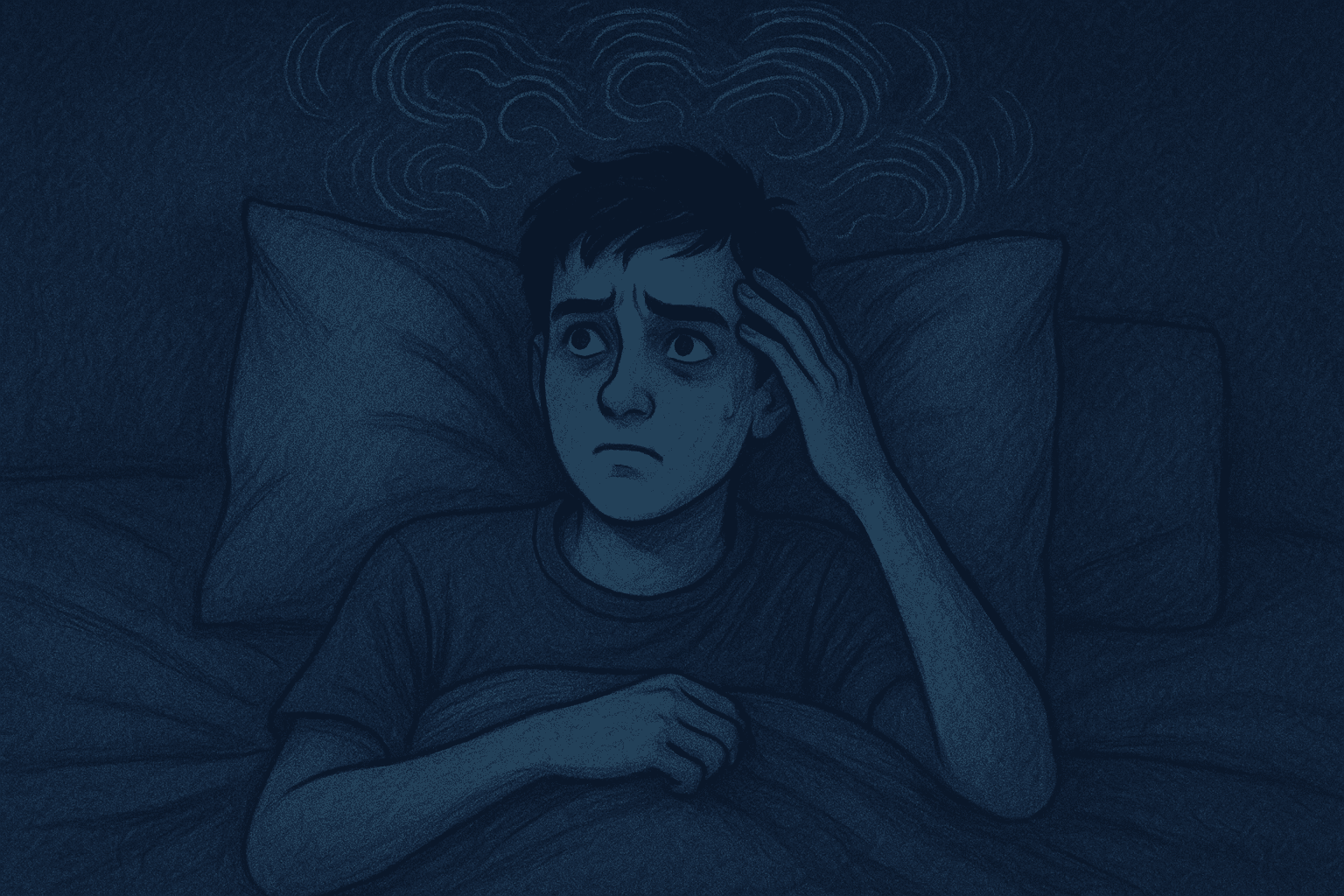
Perhaps the most challenging aspect of sleep-related panic is how quickly it can develop into a self-perpetuating cycle. Sleep deprivation triggers anxiety, which makes sleep more difficult, leading to further sleep loss and even greater vulnerability to panic.
Fear of Sleeplessness
After experiencing sleep-triggered panic attacks, many teenagers develop a fear of sleeplessness itself. This condition, sometimes called “sleep anxiety” or “insomnia phobia,” creates a problematic pattern where anxiety about not sleeping actually prevents sleep.
This anticipatory anxiety activates the sympathetic nervous system (responsible for fight-or-flight responses), making sleep physiologically more difficult to achieve.
Panic About Panic
Once teens have experienced panic attacks related to sleep deprivation, many develop “panic about panic.” It’s a heightened fear of having another attack that actually increases the likelihood of recurrence.
This secondary anxiety can be particularly intense when teens associate their bed or bedroom with panic experiences. To break this association through systematic desensitization and cognitive restructuring techniques is needed.
Immediate Relief Strategies
Breathing Techniques
The 4-7-8 breathing technique is one of the most effective methods for managing sleep-related panic. Simply inhale through your nose for 4 seconds, hold your breath for 7 seconds, and exhale slowly through your mouth for 8 seconds.
This pattern activates your parasympathetic nervous system, the body’s “rest and digest” mode, which directly counteracts the physiological arousal of panic.
Another breathing technique that works well for adolescents experiencing nighttime panic is box breathing. This involves visualizing a square while breathing in for 4 counts, holding for 4 counts, exhaling for 4 counts, and holding for 4 counts before starting again.
The visual component makes this technique particularly helpful for teens who need something concrete to focus on during panic episodes.
Grounding Exercises
When panic strikes at night, grounding exercises can help bring your attention back to the present moment and away from catastrophic thoughts.
The 5-4-3-2-1 technique is especially effective for sleep-related panic: identify 5 things you can see, 4 things you can touch, 3 things you can hear, 2 things you can smell, and 1 thing you can taste. This multisensory approach helps redirect your brain from the panic cycle.
Progressive muscle relaxation is another powerful grounding technique for sleep-panic episodes.
This involves systematically tensing and then releasing each muscle group in your body, starting from your toes and working up to your head. Not only does this redirect attention away from panic thoughts, but it also physically reduces the muscle tension that often accompanies anxiety.
Emergency Sleep Aids
In some cases, having emergency sleep aids on hand can provide reassurance and actually reduce panic about sleep. Simple interventions like sipping chamomile tea, using lavender-scented products, or listening to specifically designed sleep meditation apps can be effective first-line strategies.
For some adolescents, temporary use of over-the-counter sleep aids may be appropriate when recommended by a healthcare provider. However, we emphasize that these should be used judiciously and as part of a comprehensive treatment plan rather than as standalone solutions.
Better Sleep Habits
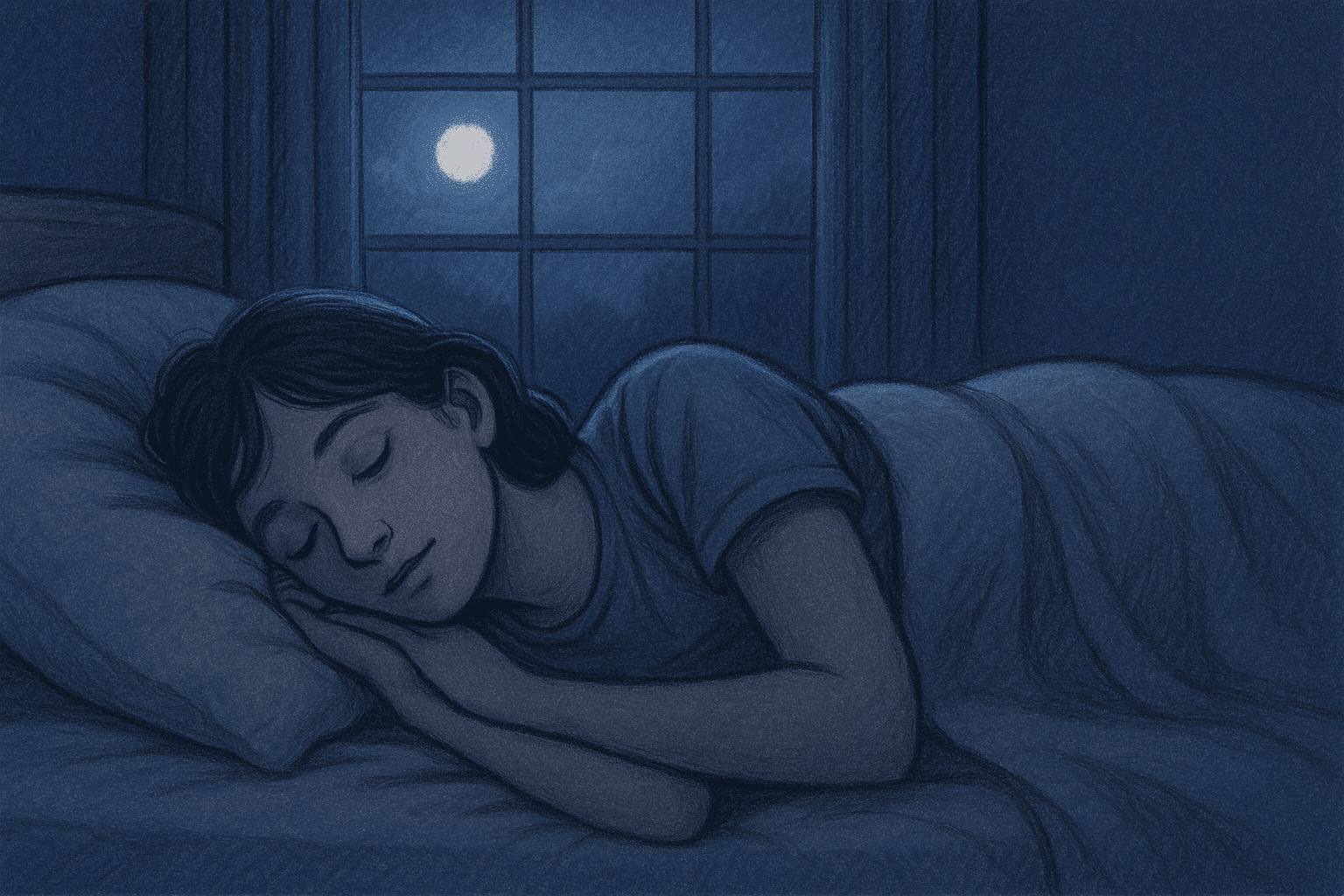
Preventing sleep-related panic attacks requires a proactive approach to sleep health.
Consistent Schedule
Maintaining a regular sleep-wake schedule is one of the most powerful interventions for preventing sleep-related panic. We encourage teenagers to go to bed and wake up at approximately the same times every day, even on weekends.
This consistency helps regulate your body’s internal clock, making it easier to fall asleep and wake naturally.
Bedroom Environment
Creating a sleep-friendly environment is essential for teens struggling with sleep-related panic. We recommend keeping bedrooms cool (65–68°F is optimal for most people), dark, and quiet. For many adolescents, blackout curtains and white noise machines can make a significant difference in sleep quality.
These environmental changes can help break the association between the bedroom and panic experiences, making it easier to establish new, more positive sleep patterns.
Pre-Sleep Routine
A consistent wind-down routine signals to your body and mind that it’s time to transition to sleep. Create a personalized 30–60 minute routine which might include gentle stretching, reading (from physical books rather than screens), journaling, or listening to calming music.
The specific activities matter less than their consistency and calming nature. Many adolescents find that writing down worries or creating a to-do list for the next day helps prevent rumination that might otherwise interfere with sleep or trigger panic.
Professional Help Options
Therapies
Cognitive Behavioral Therapy for insomnia (CBT-I) combined with panic-focused CBT is often the most effective treatment approach for sleep-related panic disorders. This evidence-based therapy helps identify and modify the thoughts, behaviors, and physiological responses that maintain both sleep difficulties and panic symptoms.
Treatment typically includes components like sleep restriction therapy, stimulus control, cognitive restructuring, and exposure exercises specifically designed to address sleep-related fears.
Medication
In some cases, medication may be recommended as part of a comprehensive treatment plan. This might include short-term use of sleep aids, longer-term anxiety management medications, or a combination approach based on individual needs.
At Mission Prep, our psychiatric providers specialize in adolescent psychopharmacology and work closely with our therapy team to ensure coordinated care.
Breaking the Sleep-Panic Cycle with Mission Prep
Mission Prep integrated treatment model combines evidence-based therapies specifically adapted for adolescent developmental needs. Through CBT-I and panic-focused CBT, we help teens understand the bidirectional relationship between sleep and anxiety while developing practical skills for managing both.
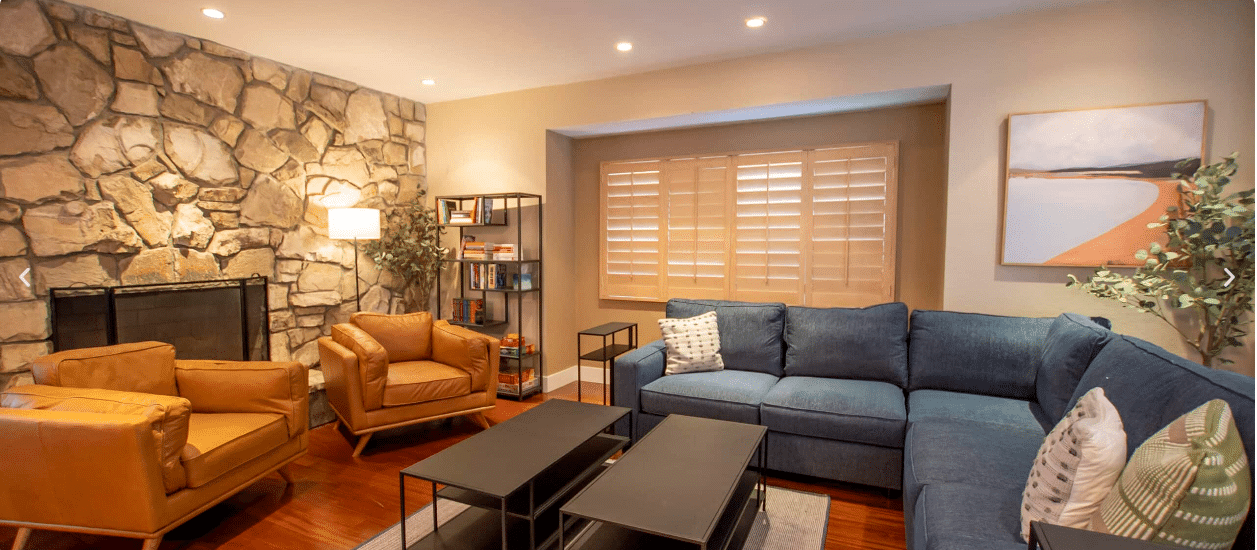
Our specialized team addresses the neurobiological vulnerabilities that make teenagers particularly susceptible to sleep-related panic, providing 24/7 support in a safe, structured environment.
Recovery from sleep-related panic attacks is absolutely possible with the right intervention. Most adolescents in our programs show significant improvement within weeks, experiencing substantial reductions in panic symptoms and marked improvements in sleep quality.
We emphasize sustainable, long-term strategies that empower teens to maintain their progress beyond treatment.
If you’re struggling with sleep-related panic attacks, don’t wait for the cycle to worsen. Contact Mission Prep today to learn how our comprehensive approach can help you break free from the sleep-panic cycle and build lasting resilience.
Frequently Asked Questions (FAQ)
Can sleeping pills prevent panic attacks?
While improving sleep quality may reduce panic vulnerability, sleeping pills alone are generally not an ideal long-term solution for sleep-related panic disorders.
These medications may help with occasional sleeplessness but don’t address the underlying anxiety patterns that connect sleep difficulties and panic.
Are daytime naps helpful for preventing panic?
The relationship between napping and panic symptoms is complex and varies between individuals. Short power naps (20–30 minutes) taken early in the day can help reduce sleep debt without disrupting nighttime sleep patterns.
However, longer naps or those taken later in the day can interfere with nighttime sleep, potentially worsening the sleep-panic cycle.
Does sleep deprivation cause permanent anxiety?
While chronic sleep deprivation can contribute to lasting changes in stress response systems, the anxiety effects of sleep loss are generally reversible with improved sleep practices and appropriate treatment.
But extended periods of severe sleep deprivation during adolescence, which is a critical period for brain development, may have more lasting impacts on anxiety regulation.
How does Mission Prep help teens with sleep-related panic?
Mission Prep offers specialized treatment programs for adolescents struggling with sleep-related anxiety disorders through an integrated approach that addresses both psychological and physiological aspects.
Our evidence-based treatment combines CBT-I with panic-focused CBT, adapted specifically for adolescent developmental needs. We provide comprehensive assessments, 24/7 support, and coordinated care including therapy, psychiatric services when needed, and family involvement.


